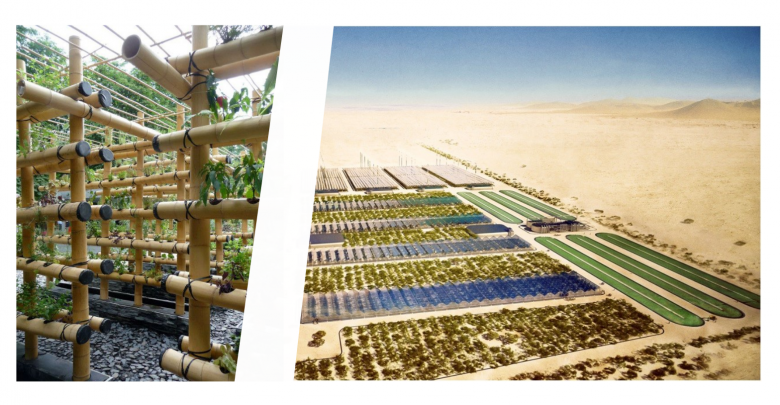
It is the application of science to the resolution of concrete problems. It constitutes a set of scientifically ordered knowledge, which allows the design and creation of goods or services that facilitate adaptation to the environment, as well as the satisfaction of essential individual needs and aspirations of humanity.
Source: Wikipedia
Taking first the quotation made, we can better understand why the title for this topic, but as technology can be a solution for the global shortage of food production, this is simple to explain, through a series of research techniques, application of testing / prototypes and taking results then applying them on a large scale.
Currently it is a known issue worldwide that there is climate change at a global level and that this affects farms and farmers, in places where the dry season lasts longer and with higher temperatures, in other places the rainy season increases its time and amount of mm per square meter in rainfall, thus causing disasters such as floods, mudslides, river overflows, among others.
This forces governments, private institutions, farmers (farmers) and scientists, to develop production methods that are friendly to the environment and that they adapt to changing climatic conditions, whether using plants that are more resistant to adverse temperature conditions or simply building greenhouses. high-tech using renewable resources.
The following describes some modern production methods that are currently being implemented and that are giving excellent results where technology, food production and care for the environment are combined:
- Bamboo as a base material for the construction of greenhouses or hydroponics; What is a hydroponic? We can quote the following text:
Hydroponics is a type of horticulture and a subset of hydroponics, which is a method of growing plants, generally crops, without soil, using solutions of mineral nutrients in an aqueous solvent. Terrestrial plants can be grown with only their roots exposed to the nutritive liquid or, in addition, the roots can be physically supported by an inert medium such as perlite, gravel or other substrates.
Source: Wikipedia
Currently, a series of investigations that have been carried out show that bamboo is a fast-growing plant with tubular branches, which can be used to make many artifacts, from furniture to houses or department stores.
It is being used in tropical countries to build hydroponics which allow low water consumption for plantations and use a reduced space of land to produce, obtaining more food as a result.
And not only this, the plantations can be better protected from the attack of natural pests existing in the environment.
It should be noted that to fumigate against pests within these hydroponic systems they implement a fumigation with organic pesticides extracted from other plants to avoid avoiding the attack of pests or have a minimum impact if the pests manage to reach the crop, and to be able to continue without problems with the process of growing and obtaining food.
- Transforming deserts into fertile land for growing Food: Due to the enormous environmental pressure at present due to the desertification of large areas of land and the large areas of existing deserts, which cannot be cultivated due to their characteristics, a series of investigations have been made to transform deserts. in cultivable land extensions and it should be noted that currently at a global level the extension of the same exceeds the areas of fertile land for cultivation, currently there are 2 recently developed methods.
1. Mixing nano clay particles with water and existing sand (liquid nanoclay).
2. Cellulose mixture and plant remains made into a paste mixed with water and existing sand (Research by Zhijian Yi and Chaohua Zhao in China).
These methods allow food to be grown in the least thoughtful place in deserts where it is practically impossible to grow food in a really profitable way and it is worth noting the cost of applying the Chinese researchers’ method has a very low cost, having excellent results and with water consumption. very low compared to traditional farming methods on fertile land.
- Fish farming in multi-level ponds: This is another method that is currently under development and under construction. Its goal is to bring fish farming to areas close to cities, using little water and as little space as possible, resulting in high productivity, thus being able to cover the great demand. that cities currently have in terms of consumption of foods with high protein content at a low production cost and friendly to the environment.
There are other investigations in the agri-food area that are under development in different countries of the world that seek a balance between food production and care for the environment and its natural resources that are giving very good results.
But these efforts to meet the food needs of the world’s population will be of no use if we all do not become aware of taking care of the natural resources that exist on our planet, that includes you as a person who lives in this world in which you must be responsible with the care of the environment that surrounds you.





